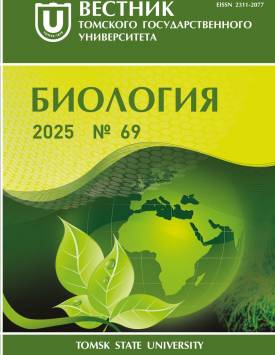Genetic diversity of Telengite and Altai-kizhi populations by markers used in forensic genetics
The need to improve the accuracy of genetic testing in establishing kinship, both in civil cases and when identifying the remains of people after plane crashes, fires, terrorist attacks and other disasters, has led to the development of new methods. One is to expand the panel of used genetic markers by adding highly informative autosomal STR markers. These markers can help identify more closely related individuals, making it easier to determine kinship between parents and children, siblings and stepbrothers. This can be especially useful in difficult cases where traditional methods may not be sufficient. The second is the use of additional markers located on the sex chromosomes. Their features of inheritance simplify the examination of complex cases and provide advantages in the analysis of mixed sample. To correctly use new multiplexes, it is important to have an understanding of the genetic structure of the population from which the DNA profile originates. The level of genetic diversity directly affects the reliability and effectiveness of genetic analysis. In this study, we compared two populations of Southern Altaians using two different systems of genetic markers. These markers can increase the reliability and informative value of genetic examinations in difficult cases of kinship determination.The first set includes 18 STR markers (HPRTB, DXS8378, DXS6797, DXS6804, GATA165B12, DXS9902, DXS6810, DXS8377, DXS101, DXS7133, DXS7424, DXS7423, DXS6789, GATA31E08, DXS10079, DXS10103, and DXS7132), while the second set includes 23 autosomal STR markers (D20S1082, D6S474, D14S1434, D4S2666, D1S1677, D11S4463, D4S2364, D9S1122, D2S1776, D17S974, D10S1435, D3S3053, D5S2500, D1S1627, D3S4529, D2S1360, and D3S1744). The assessment of genotype distributions for Hardy-Weinberg equilibrium was only performed for autosomal markers, as samples from men were analyzed in this study. For the Telengite population, the genotype distributions at the D4S2666 and D10S2325 loci deviated from Hardy-Weinberg expectations. For the Altai-Kizhi population, a larger number of loci showed deviations from Hardy-Weinberg: D6S474, D4S2364, D1S1627, and D10S2325. In all cases, the observed level of heterozygosity was lower than expected. Therefore, it can be assumed that deviations from equilibrium were caused by a high rate of intra-district endogamous marriages among Southern Altaians. The average value of expected heterozygosity in the Telengite population was lower than in the Altai-Kizhi population for both X-STR and ASTR markers. At the same time, the average expected heterozygosity for autosomal STR panel was higher than for X-STR. The Telengite population had the largest total number of alleles: 178 for autosomal markers and 121 for X-STR markers. These values are relatively low compared to other populations, such as the Russian population with 228 alleles for 20 ASTRs and Belarusians with 250 alleles. The assessment of the genetic distance between samples of southern Altaians using the Rst method revealed significant differences between Telengites and Altai-Kizhis, while a higher genetic similarity was found for autosomal STR markers (0.006, p = 0.000) compared to X-STR markers (0.007, p = 0.002). Given the significant genetic differences identified between these two ethnic groups in southern Altai, it is important to consider the reference allele frequencies for each population during genetic analysis. Combining Altai-Kizhi and Telengite samples into a single group (southern Altai) could reduce the reliability of genetic testing in the Telengite population. The Authors declare no conflict of interest.
Keywords
Telengites, Altai-kizhi, population genetics, forensic geneticsAuthors
| Name | Organization | |
| Vagaitseva Ksenia V. | Research Institute of Medical Genetics, Tomsk National Research Medical Center | kseniya.simonova@medgenetics.ru |
| Kolesnikov Nikita A. | Research Institute of Medical Genetics, Tomsk National Research Medical Center | nikita.kolesnikov@medgenetics.ru |
| Scalin Maxim D. | Institute of Genetics named after N.I. Vavilov of the Russian Academy of Sciences | maxskalin@gmail.com |
| Valikhova Larisa V. | Research Institute of Medical Genetics, Tomsk National Research Medical Center | Larisa_Ermizova9@mail.ru |
| Rusavina Olga D. | Research Institute of Medical Genetics, Tomsk National Research Medical Center | ruzavella@mail.ru |
| Pestrecova Daria E. | National Research Tomsk State University | |
| Visochina Anastasia N. | National Research Tomsk State University | |
| Kharkov Vladimir N. | Research Institute of Medical Genetics, Tomsk National Research Medical Center | vladimir-kharkov@medgenetics.ru |
| Stepanov Vadim A. | Research Institute of Medical Genetics, Tomsk National Research Medical Center | vadim-stepanov@medgenetics.ru |
References

Genetic diversity of Telengite and Altai-kizhi populations by markers used in forensic genetics | Vestnik Tomskogo gosudarstvennogo universiteta. Biologiya - Tomsk State University Journal of Biology. 2025. № 69. DOI: 10.17223/19988591/69/4
